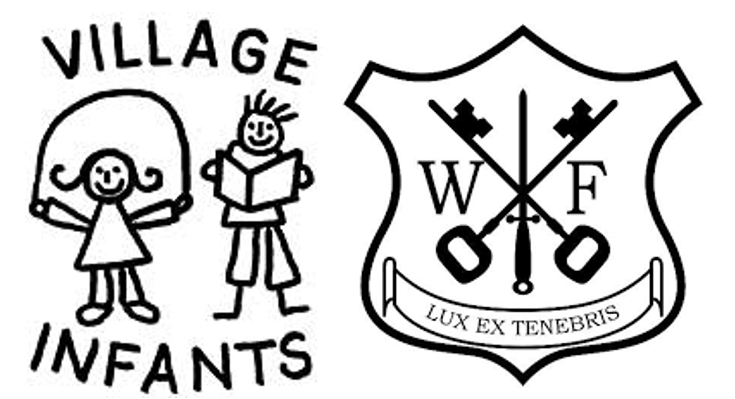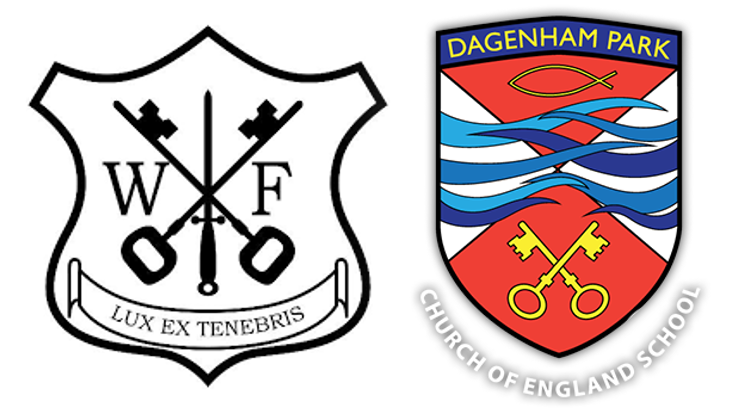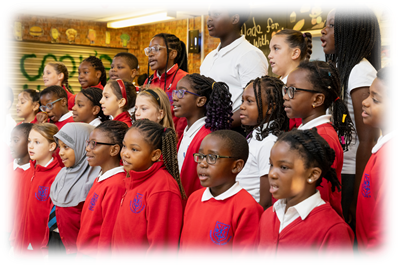Key Stage 1 to Key Stage 2 transition: Village Infants School and William Ford C of E Junior School

The transition from key stage 1 at Village Infants School to key stage 2 at William Ford C of E Junior School is a carefully orchestrated process, rooted in a shared ethos. Both institutions are dedicated to ensuring pupils acquire the knowledge, skills, and ambition for their future, shaped by a deep understanding of the local area they serve, in order that pupils my flourish and thrive in future employment and life. This commitment extends to fostering inclusion for all pupils, including those with disadvantages and special educational needs and disabilities (SEND).
The curriculums at both schools are designed to be progressive: providing a structured and evolving learning experience. Despite differences in leadership structures, leaders and teachers from both institutions meet regularly to review work, discuss schemes, and observe practices within each other's settings. This collaborative approach promotes a dynamic and well-rounded educational experience for the students. Both schools actively work towards ensuring that children not only excel academically but also develop strong language and vocabulary skills. This emphasis is crucial in preparing students for the challenges and opportunities they will encounter as they progress through their education. The use of the Little Wandle phonics programme is consistent in both our institutions, ensuring a standardised approach to language development. Immediate support is provided at William Ford for students who have not passed the Year Two phonics recheck, maintaining a continuous focus on foundational skills. Additionally, a maths mastery approach is implemented across both schools, emphasising a deep understanding of mathematical concepts and ensuring that reasoning and fluency skills developed in key stage one continue to embed and develop through key stage two.
Recognising the importance of providing adequate support for SEND, both schools worked collaboratively to install new provisions within the shared-use sports hall complex. This joint effort underscores our commitment to inclusivity and ensures that every child, regardless of their circumstances, receives the necessary support to thrive in their educational journey.
Governance plays a pivotal role in the transition process. Sharing a governor, and having the deputy head teacher of William Ford serve on the governing body at Village Infants, ensures a cohesive and consistent approach at the governance level. This collaboration strengthens the bridge between the two stages of education, promoting a smooth transition for pupils.
Safeguarding is a shared priority for both schools, particularly given the overlapping families across the settings. Concerns are addressed in accordance with GDPR, and designated safeguarding leads (DSLs) meet regularly to ensure a comprehensive and proactive approach to student welfare. The use of CPOMS and Integris MIS software further facilitates the seamless transition of pupil files, prioritising the safety and well-being of each student. Both schools have also worked together to adopt EduKey’s ‘Provision Map’ software, ensuring that there can be continuous provision of interventions.
The transition process is not only meticulously planned but also marked by a range of events and activities. The Headteacher at William Ford takes an active role in hosting welcome events for parents and pupils, fostering a sense of community and familiarity. Assemblies at Village Infants further strengthen the connection between the two stages of education. Both Headteachers attending each other's concerts and events reinforces the shared commitment to the students' overall development. There are also additional meetings within the summer term between teachers, SENDCos and safeguarding leads to ensure a comprehensive handover and smooth transition.
Beyond academics, both schools actively support the same local charity, Stand By Me, exemplifying a shared sense of social responsibility with a global focus. Pupils from both settings enjoy cross-site interactions through visits and shared Teaching and Learning reviews, fostering a sense of unity. The mutual desire to learn and improve from each other is evident in the collaborative efforts of our year two and year three teachers, who not only host new classes before the summer holidays but also visit each other's schools to ensure a seamless transfer of pertinent information.
Both Ms. Cattle and Mr. Huntingford maintain a visible presence in and around the school site, so do approach us with questions or concerns. Our open and accessible approach reflects a commitment to transparency and collaboration in the best interest of the students.
In essence, the transition from key stage 1 to key stage 2 is not just a shift in education levels; it is a comprehensive and collaborative journey designed to nurture each child's potential and provide a foundation for lifelong learning and success.

Key Stage 2 to Key Stage 3 transition: William Ford C of E Junior School and Dagenham Park Church of England Secondary School

Whilst pupils from William Ford attend several different secondary schools, approximately 40% attend the neighbouring school, Dagenham Park C of E Secondary School.
The seamless transition from key stage two at William Ford C of E Junior School to key stage three at Dagenham Park Church of England Secondary School is underpinned by a common Christian ethos. The Christian ethos of Dagenham Park builds upon that of William Ford. Both schools share an outward-facing approach, emphasising the importance of preparing pupils for the world of employment. This shared ethos forms a strong foundation for the transition, fostering an environment where students can flourish and grow, equipped with the skills and knowledge needed for their future endeavours.
Curriculum leaders for maths and literacy have collaborated in meetings to ensure a smooth transition from key stage two to three. Lesson observations have taken place across both sites, offering valuable insights into teaching methods and styles ensuring there is suitable pitch and challenge at key stage three along with ensuring the key stage 2 curriculum provides pupils with the foundations needed for their next step in their educational journey. Such validation has ensured that both schools recognise these strengths in each other’s provisions. Meetings around curriculum schemes of work also contribute to aligning the academic journey and ensuring a continuous progression. The sharing of SATS papers by the Headteacher of William Ford with Dagenham Park further supports this effort, providing a basis for assessing and challenging students appropriately.
One of the key elements of the transition process is familiarising William Ford pupils with the Dagenham Park school site. This includes the utilisation of facilities such as the school field, Astroturf pitches, and sports hall. By providing access to these spaces, the transition aims to make the move from primary to secondary education more comfortable and less daunting. Moreover, Dagenham Park has actively engaged with William Ford's STEM club, allowing students access to their science laboratories. This collaborative approach not only enriches the learning experience but also fosters a sense of continuity and progression.
Both schools have also collaborated where there have been safeguarding concerns crossing both sites. The transition process is marked by a range of initiatives that ensure familiarity, collaboration, and a shared commitment to the holistic development of students.
To familiarise Year Six pupils with secondary school life, Dagenham Park staff actively engage with William Ford through assemblies and information sessions. This proactive approach aims to ease any anxieties and ensures that students enter key stage three with a good level of knowledge about the expectations and opportunities at the secondary school.
Overall, the transition from Key Stage Two at William Ford C of E Junior School to Key Stage Three at Dagenham Park Church of England Secondary School is a holistic and collaborative effort. It encompasses not only academic alignment but also a focus on acquaintance, shared ethos, and partnerships with other educational institutions. This approach aims to provide a supportive and enriching experience for students as they embark on the next phase of their educational journey.
William Ford is also forging valuable links with Eastbrook Secondary School, which supports art and design units within years five and six at William Ford. This collaboration involves providing specialist teaching and access to photography labs and art studios within Eastbrook School. Such partnerships enrich the curriculum, offering students exposure to a broader range of resources and expertise.
To further acquaint pupils with the secondary school landscape, students from William Ford have attended sporting events at Jo Richardson School. This initiative goes beyond the academic realm, allowing students to familiarise themselves with the buildings, staff, and layouts of their three closest secondary schools. This broader understanding contributes to a smoother transition and a sense of community amongst the students.
Recognising the diverse educational preferences of parents, William Ford has also taken a proactive approach to support those seeking private education. Mr. Huntingford, the Headteacher at William Ford, has attended and hosted meetings with Brentwood School. This engagement ensures that families are aware of bursaries and scholarships available and are supported through the application process, offering a comprehensive approach to addressing the needs and aspirations of the school community.

